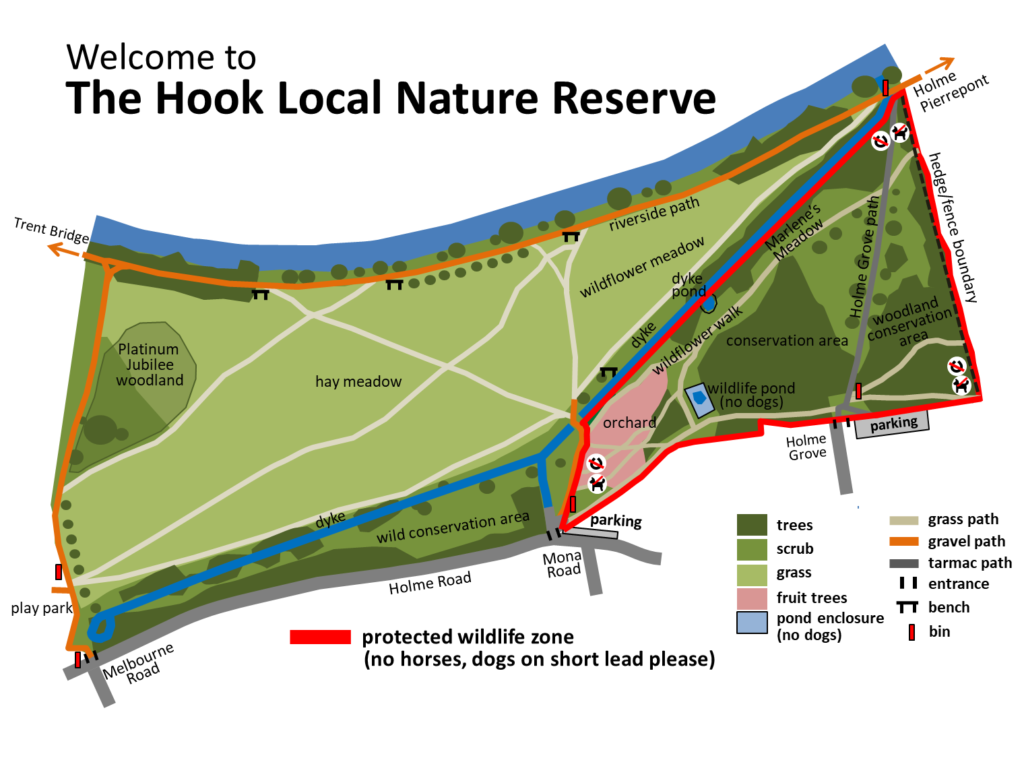
We are introducing new protections for wildlife in the area south of the dyke, which is particularly rich in wildlife and sensitive to disturbance. Whilst dogs can continue to be exercised off lead on the main meadow, we are asking owners to keep their dog on a short lead in the ‘Protected Wildlife Zone’ shown on the map. We’re asking horse-riders not use this area and for visitors to keep to paths so that wildflowers can grow. This approach will give added protection to wildlife, has the support of Rushcliffe Borough Council and is the practice in all Nottinghamshire Wildlife reserves.
Since becoming a nature reserve in 2009, The Hook has changed enormously with a mosaic of habitats developed including woodland, orchard, wildlife pond, meadow and wildflower areas. All of these have been created thanks to the hard work of volunteers involving many members of the community. These new habitats are attracting wildlife with 89 species of birds seen on or from the Hook over recent years, 21 species of butterflies and growing numbers of mammals. In May there were sightings of fox, badger, muntjac deer, roe deer and a stoat.
However, the rising number of visitors since Covid and especially the increased number of dogs is causing pressure. In the area south of the dyke, with its twisty paths and blind corners, dogs off lead can disturb wildlife, damage plantlife and surprise an unwary walker – particularly a child. A curious dog can cause a bird to abandon its nest. For all these reasons we are asking dog owners to keep their dog on a short lead in the ‘Protected Wildlife Zone’. With everyone’s help we can let wildflowers grow, birds nest successfully and wildlife thrive.
Before putting up signs we have publicised these changes widely, run information stalls and spoken at meetings. The response has been extremely positive and we thank people for supporting these protections for wildlife.
